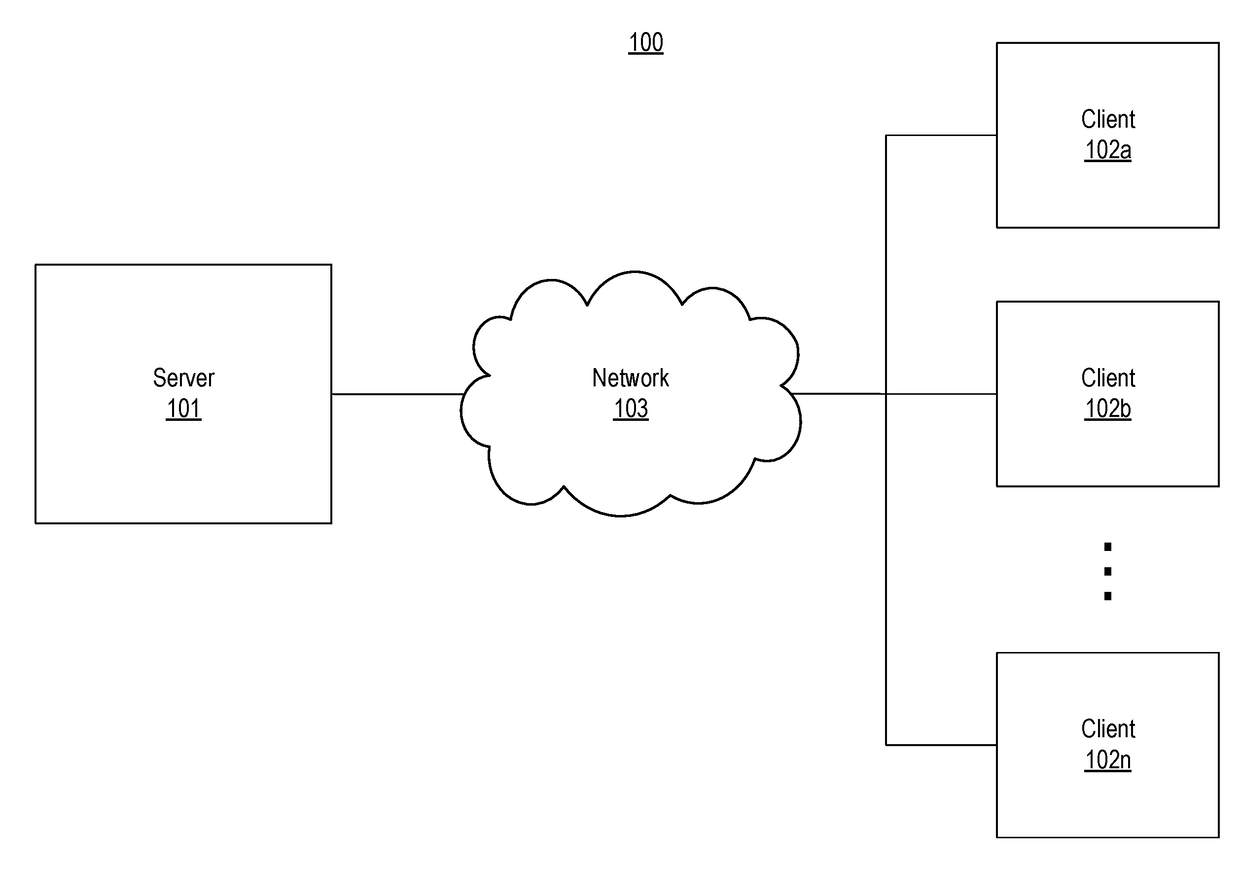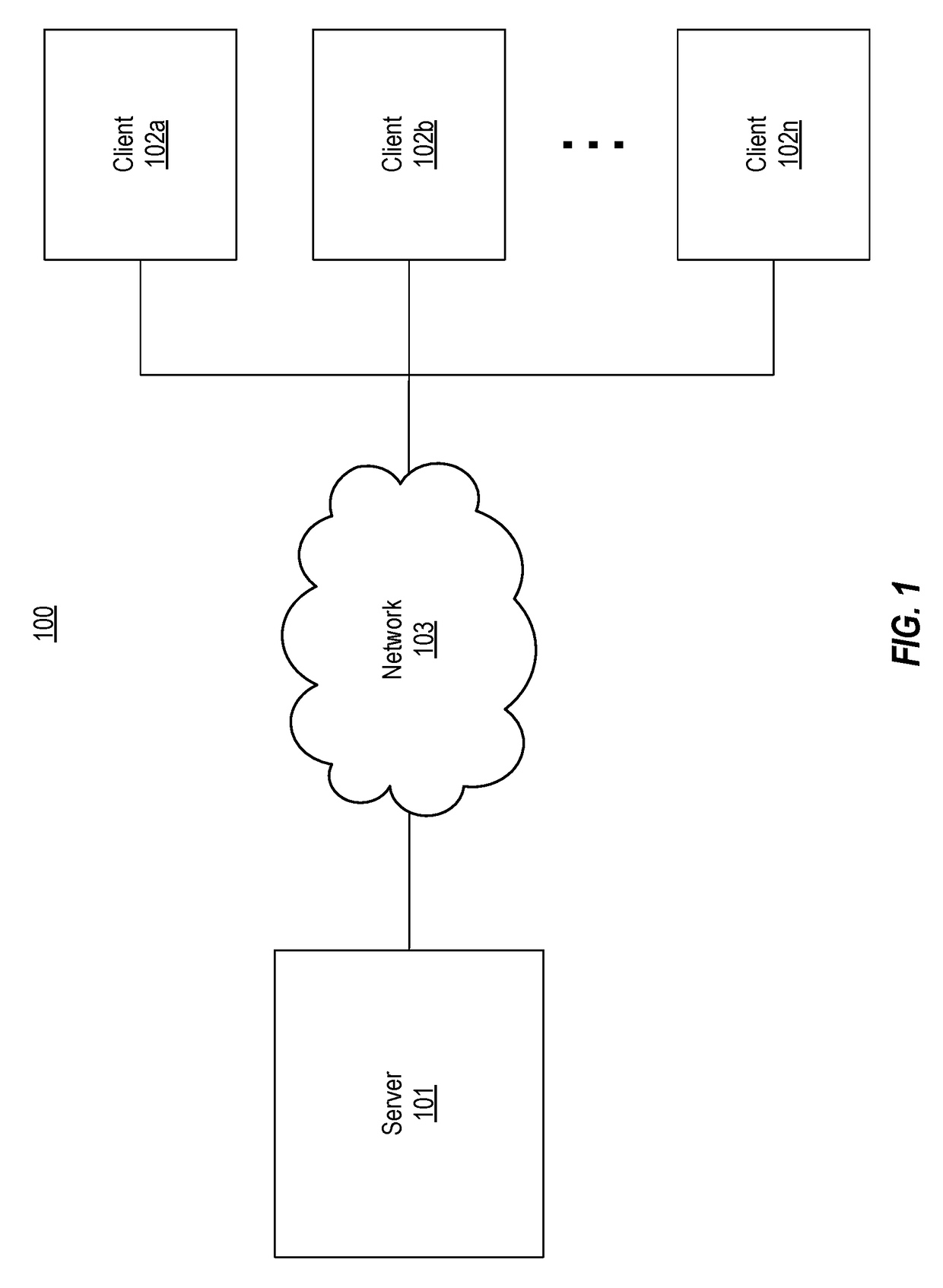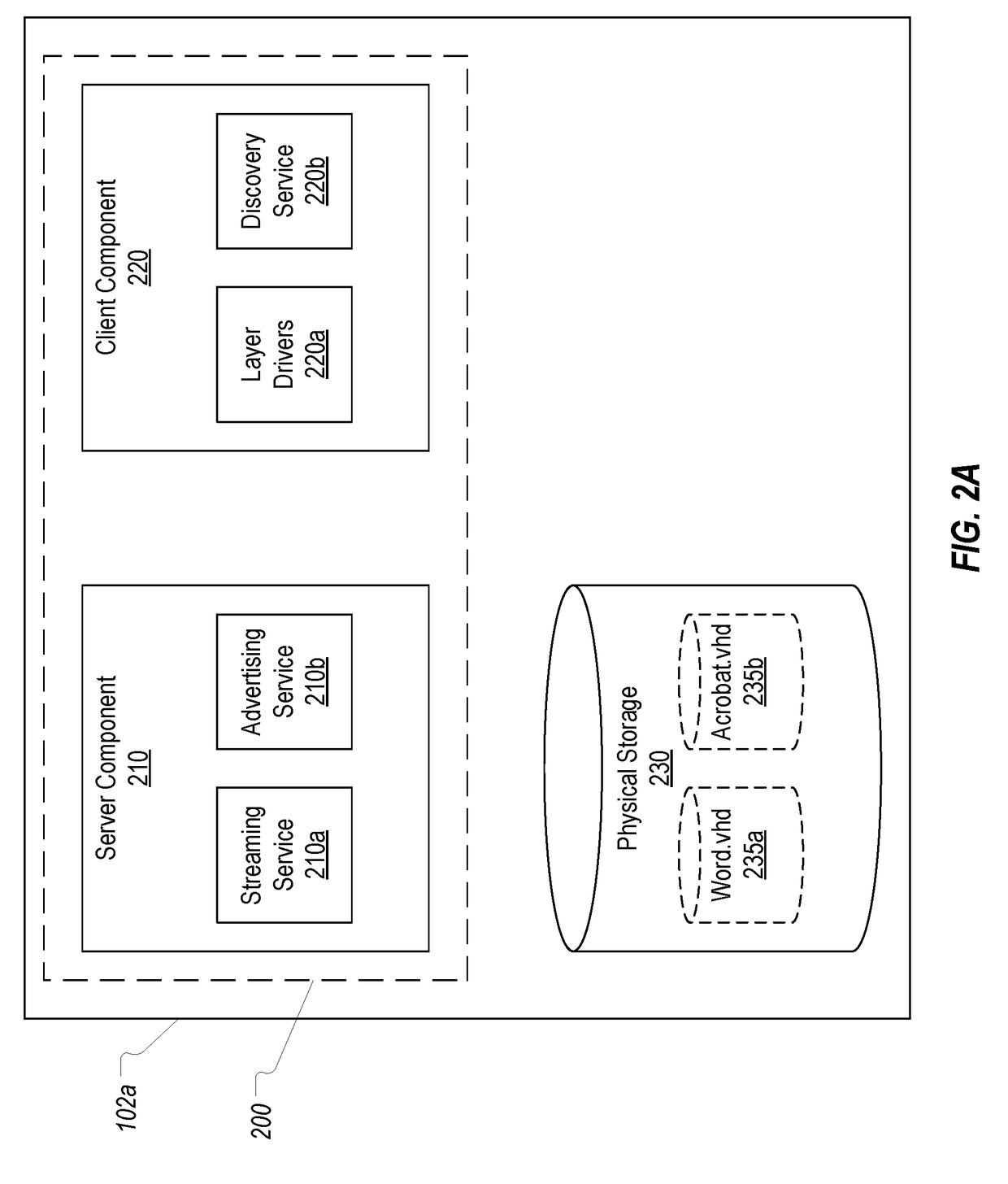Providing application virtualization using a peer-to-peer model
a technology of application virtualization and peer-to-peer model, applied in the direction of transmission, electrical equipment, etc., can solve the problems of prohibitive cost and overhead, dedicated server, increased cost and overhead associated with providing application virtualization, etc., and achieve the effect of avoiding cost and overhead
- Summary
- Abstract
- Description
- Claims
- Application Information
AI Technical Summary
Benefits of technology
Problems solved by technology
Method used
Image
Examples
Embodiment Construction
[0021]In this specification, the provision of application virtualization will be described as being carried out using application layers in the form of application vDisks. It is noted, however, that this is only one way in which a virtualized application may be distributed. The present invention should also extend to embodiments where an application and its resources may be packaged in some other container (e.g., other than as a .vhd file) for distribution between clients in a peer-to-peer fashion. Accordingly, the term “application layer” as used in the specification and the claims should be construed as encompassing a .vhd file that includes one or more applications and any required resources as well as encompassing any other structure (e.g., a different file type (such as VHDX, HDD, VMDK, etc.), a collection of files of one or more types, or one or more folders) that can contain one or more applications and any required resources and that can be distributed on demand.
[0022]FIG. 1...
PUM
 Login to View More
Login to View More Abstract
Description
Claims
Application Information
 Login to View More
Login to View More - R&D
- Intellectual Property
- Life Sciences
- Materials
- Tech Scout
- Unparalleled Data Quality
- Higher Quality Content
- 60% Fewer Hallucinations
Browse by: Latest US Patents, China's latest patents, Technical Efficacy Thesaurus, Application Domain, Technology Topic, Popular Technical Reports.
© 2025 PatSnap. All rights reserved.Legal|Privacy policy|Modern Slavery Act Transparency Statement|Sitemap|About US| Contact US: help@patsnap.com



